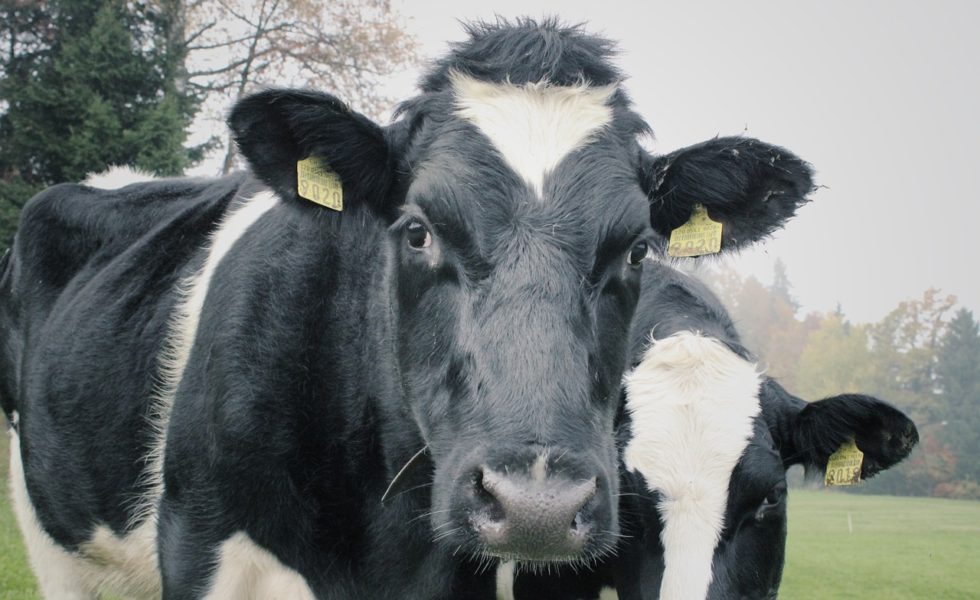America’s Farming Soul
Posted on August 3, 2018

Sometimes it’s even hard for me to believe what I read in the newspaper. The latest “someone-really-said-that?” moment arrived courtesy of The Milkweed, the sharp-penned, monthly dairy newspaper owned and edited by Peter Hardin in Brooklyn, WI.
In its July 2018 edition, Milkweed writer Jan Shepel highlighted the controversy fueled by Marin Bozic, a dairy foods marketing economist from the University of Minnesota, in testimony before a joint legislative committee hosted by the Minnesota state senate last February.
Bozic, asked to describe the “current situation in the [state’s] dairy sector,” told legislators that he had “estimated… over 80% of the state’s remaining dairy farmers are ‘last generation dairies.’”
Interestingly, that walking-dead news wasn’t what landed Bozic, who doubles as the associate director of the Midwest Dairy Foods Research Center, in hot milk. It’s what he said next that did the trick:
“In this ‘sour’ milk’ economy,” wrote Shepel, Bozic “proposed a new kind of dairy business model to take the state forward…
“He told lawmakers that the capital needed to build a new dairy that will achieve sufficient economies of scale is $30 to $50 million and that no single farmer can afford that.” As such, “‘We need to bring together 10-12-15 families that all bring their financial wherewithal.’”
By itself, that idea was—is—radical even for Minnesota’s fiercely independent dairymen and historically progressive politicians. But before Bozic gave his audience time to absorb that body blow, he offered a “powerhouse” illustration, “River View LLC, a Morris, MN, dairy with 350 partners who invested in the business.”
Reaction to Bozic’s “powerhouse” testimony was swift and angry. Since Minnesota has about 460,000 dairy cows, wrote Bill McMillin of Kellogg, MN in a letter printed in several local ag publications, Bozic’s basic idea means “it would take about 11” equally-sized, laterally-integrated dairies “to produce the milk of the current 3,000 dairy farms in the state.”
Then McMillin, as quoted by The Milkweed, asked the operative question at the heart of not just Minnesota dairy woe but all 21st century American ag policy: “Do we push for the model suggested by Bosic (sic) or do we strive to find policy which works for the majority of dairy”—really all U.S. farm and ranch—“producers?”
It’s the critical question that’s been in need of an answer for more than 20 years since, in 1996, Congress—led by then-House Ag Chairman Pat Roberts, R-KS, now Senate Ag Chairman Pat Roberts—pushed Big Ag’s most hands-off Farm Bill proposal through a GOP-dominated House and Senate.
The essence of this anti-Washington approach was decidedly simple: here are seven years of fixed government payments, go forth and farm any way you want. This uncoupling of government price support from production spawned the law’s nickname, Freedom to Farm or F2F, because it removed virtually all links between farmers (and dairy farmers) and government income support programs.
At least that was the original design of the seven-year, $42 billion program.
Untethered by government rules, however, farmers did what farmers are very good at, they produced. And produced and produced.
In response, commodity prices did what commodity prices do in periods of overproduction: They fell. F2F’s $42 billion in government support disappeared and Congress allocated more money—eventually nearly $100 billion—before F2F was “reformed” a year early, in 2002.
And again in 2008 and 2014 and, now, the still-not-done 2018 law.
All those “reforms,” however, did not alter the beating heart of this hands-off American farm policy, Freedom to Farm. The majority of farmers, ranchers, and Congress continue to promote and support the idea that government’s role in farming and food is that of a benevolent backstop: If you need us, give us a call.
Only now, it appears, there will be a handful of laterally integrated “producers”—and how I hate that word because these are people with lives, not just “producers” with jobs—a generation from now to do the calling.
This can’t be the sole American farm policy much longer if America hopes to retain its farming soul.
© 2018 ag comm
Share This